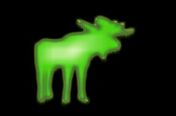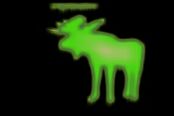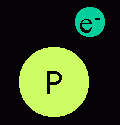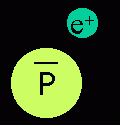
Introduction 
Introduction 
Introduction What is it?
|

Alright. I know who said what about this stuff, but I still don't get it. WHAT is it? And what about that electron having different notation?
Where, oh where to begin. As we said earlier, every particle in the universe has an anti-particle. We used the tau and anti-tau (t-bar) as an example. Also stated earlier, Carl Anderson detected and named the positron--anti-particle of the electron.
But what is the difference?
Well, anti-matter is actually something created out of individual anti-particles. The question then becomes, what are anti-particles?
An anti-particle is the same as its corresponding ordinary particle with regard to physical appearance, mass, average lifetime, spin, magnitude of magnetic moment (the product of the pole strength and the distance between the poles), and magnitude of electric charge. The laws of physics are exactly the same for both; i.e. an anti-particle obeys the same gravitational laws an ordinary particle. However, the anti-particle has an opposite (sign of) electric charge, opposite intrinsic parity (the operation which reverses the signs of the coordinates used to describe a system, so that a three-dimensional coordinate position x, y, z is now reversed for an anti-particle to -x, -y, -z), and opposite direction of magnetic moment.
Thus, the positron is fundamentally the same as the electron except it has the opposite value of all charges (a.k.a. opposite quantum numbers). So back to the electron. The notation for the electron and positron is as follows:
However, some particles are neutrally charged, such as the neutron and photon (the particle that theoretically carries light). Their anti-particles--the anti-neutron and anti-photon--also have no charge; the opposite of zero is still zero.
Now I'd like to bring out Tim, and his high-school chum, Anti-Tim.
Please notice that Anti-Tim is designated, like most other anti-matter, with a bar over his head. He looks like Tim. Why? Because anti-matter has the same physical appearance as matter. Now let's say, theoretically of course, Anti-Tim kisses ordinary Tim. (We are not endorsing gay moose.) What would happen? (Use your mouse to click on the gray target.)
WHOA! What in the world just happened? I can't believe my eyes! Well, are you ready for this? When Tim and Anti-Tim kissed, matter and anti-matter met. When this happens the opposite particles annihilate into pure energy--more specifically gamma rays. (Additionally, this pure energy is defined as the greatest amount of energy per unit of mass theoretically possible.) When the ordinary and anti-particles met, photons (the massless particles of light which composes gamma rays) were created. But why two sets of photons? And why did the leave in opposite directions? Well, first of all, photons have no electric charge. This allows for the conservation of energy and momentum--which states that the total charge and energies (rest mass energy plus kinetic energy) must be the same before and after the collision. Let's say Tim had an electric charge of 10 units; conversely, Anti-Tim had a charge of -10 units. When they interact, the total must be zero. Thus photons are needed. Why must everything be conserved? Because of our frizzy-haired buddy and his E=mc^2. According to these laws, none of the energy or momentum can be lost. Two sets of photons are needed to carry away the opposite energies. Moreover, the opposite momentums before will produce two opposite velocities afterward. That's why the two particles exit in opposite directions. Get it? Okay, picture two balls approaching each other on a frictionless surface. When they hit, they swap momentum and energy. They both bounce backwards. That's sorta the same idea (minus the annihilation into pure energies bit)--but you get the picture. Okay, back to the annihilation into pure energy mumbo jumbo. There is another side to this coin. Anti-matter and ordinary matter particle pairs are occasionally created out of this pure energy--and always in pairs. Thus, sometimes the energy and momentum is pure energy for a nanosecond, then it converts back to matter and anti-matter. Odd isn't it.
I know your brain hurts by now, so we'll end this section momentarily. Believe it or not, scientists have actually created anti-matter by the process above (from energy, that is) at particle accelerators/laboratories. January 1996: Scientists at the European Laboratory for Particle Physics (a.k.a. CERN) in Switzerland created nine anti-hydrogen atoms. Despite the fact that the atoms lasted for about 40-billionths of a second, the accomplishment was a leap forward in the understanding of anti-matter. After 40 billionths of a second, as you may have guessed, the anti-atoms came in contact with ordinary atoms and KABOOM!
|










